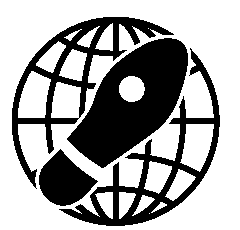Epidemic Intelligence Service
 | |
| Formation | 1951 |
The Epidemic Intelligence Service (EIS), by some analysts called 'the medical CIA'[1], is a program of the U.S. Centers for Disease Control and Prevention (CDC).[2] The modern EIS is a two-year, hands-on post-doctoral training program in epidemiology, with a focus on field work.
Contents
History
Creation of the Epidemic Intelligence Service was proposed by Dr. Alexander Langmuir, chief of epidemiologic services, communicable disease center at the U.S. Public Health Service on March 30, 1951.[3] Dr. Langmuir said that it was of utmost importance to planning of appropriate defense measures against biological warfare germs, development of new detection devices, and train laboratory workers for rapid recognition of biological warfare germs.[4] It arose from concerns[5] around the biological warfare effort the United States was conducting in the Korean War.
The Epidemic Intelligence Service was organized on September 26, 1951, with the purpose of investigating disease outbreaks that are beyond the control of state and local health departments, enforcement of interstate quarantine regulations, and providing epidemic aid at the request of state health agencies. The Epidemic Intelligence Service's first staff members consisted of 21 medical officers from the U.S. Public Health Service.[6]
Background
The EIS is operated by the CDC's Center for Surveillance, Epidemiology, and Laboratory Services (CSELS), in the Office of Public Health Scientific Services (OPHSS).[7]
Persons participating in the program, known colloquially as "disease detectives", are formally called "EIS officers" (or EIS fellows) by the CDC and have been dispatched to investigate hundreds of possible epidemics created by natural and artificial causes. Since 1951, more than 3,000 EIS officers have been involved in domestic and international response efforts, including the anthrax, hantavirus, West Nile virus in the United States, and the 2014–16 Ebola epidemic in West Africa.[8][9]
EIS officers begin their fellowship with a one-month training program at CDC headquarters in Atlanta, Georgia; however, 95% of their two-year term consists of experiential rather than classroom training.[10] For the remainder of their service, EIS officers are assigned to operational branches within the CDC or at state and local health departments around the country. Placement is determined via a highly competitive matching process.[11] The CDC pairs EIS officers with a Public Health Advisor or "PHA", forming a scientist (EIS officer) and operations (PHA) team.[12] EIS is a common recruiting pathway into the Public Health Service Commissioned Corps.[13]
The EIS is the prototype for Field Epidemiology Training Programs (FETP), which operate in numerous countries with technical assistance provided by the CDC.[14]
History of responses
Since the inception of the EIS, officers have been involved with treatment, eradication, and disease-control efforts for a variety of medically related crises.[15] Below is an abridged timeline of their work.
- 1950s: The EIS worked on polio, lead poisoning, and Asian influenza
- 1960s: Cancer clusters, and smallpox
- 1970s: Legionnaires' disease, Ebola, and Reye syndrome
- 1980s: Toxic shock syndrome, birth defects, and HIV/AIDS
- 1990s: Tobacco, West Nile virus, and contaminated water
- 2000s: E. coli O157:H7, SARS, H1N1, and the aftermath of Hurricane Katrina
- 2010s: The aftermath of the Haiti earthquake, obesity, fungal meningitis, and Ebola
- 2020s: Zika virus, COVID-19 pandemic[16]
EIS conference
EIS officers attend an annual conference in Atlanta, Georgia, to present components of their work from the preceding year.[17]
In popular culture
In the 2011 film Contagion, the character Doctor Erin Mears (portrayed by Kate Winslet) is a physician and investigator with the Epidemic Intelligence Service who was tasked by the CDC to discover the origin of a highly contagious and deadly virus known as MEV-1 which was rapidly spreading throughout the world following initial outbreaks in Kowloon, Hong Kong and Minneapolis, Minnesota. She later contracted the disease and soon died.
References
- ↑ https://blog.nomorefakenews.com/2017/12/20/the-medical-cia-how-environmental-destruction-magically-becomes-a-medical-disease/
- ↑ name=2020-NewYorker-COVID19-SeattleNYC>cite news|last1=Duhigg|first1=Charles|title=Seattle's Leaders Let Scientists Take the Lead. New York's Did Not|url=https://www.newyorker.com/magazine/2020/05/04/seattles-leaders-let-scientists-take-the-lead-new-yorks-did-not%7Cwork=The New Yorker|date=April 26, 2020 |language=en
- ↑ name= popham>Popham, John (March 31, 1951). "Langmuir Warns of Germ Warfare". New York Times News Service. Chattanooga Daily Times (Chattanooga, Tenneessee). p. 2.
- ↑ name= popham
- ↑ "EIS History". Epidemic Intelligence Service. Centers for Disease Control. Retrieved January 20, 2018.
- ↑ name= organized>"Epidemic Intelligence Service Is Organized". Associated Press. The News (Frederick, Maryland). p. 13.
- ↑ cite web|url=https://www.cdc.gov/csels/whoweare.html |title=Who We Are |publisher=cdc.gov|accessdate=2018-01-20
- ↑ cite web|url=https://www.cdc.gov/eis/history.html |title=A History of Success |publisher=cdc.gov|accessdate=2018-01-20
- ↑ cite web|url=https://www.cdc.gov/vhf/ebola/outbreaks/2014-west-africa/index.html |title=2014-2016 Ebola epidemic in West Africa |publisher=cdc.gov|accessdate=2018-01-20
- ↑ cite web|url=https://www.cdc.gov/EIS/FAQ.html |title=Frequently Asked Questions About EIS|Epidemic Intelligence Service|CDC |publisher=Cdc.gov |date=2015-03-05 |accessdate=2016-12-31
- ↑ cite web|url=https://www.cdc.gov/EIS/FAQ.html |title=Frequently Asked Questions About EIS|Epidemic Intelligence Service|CDC |publisher=Cdc.gov |date=2015-03-05 |accessdate=2016-12-31
- ↑ name=1990-PublicHealthReports>cite journal|last1=Sb|first1=Thacker|last2=Ra|first2=Goodman|last3=Rc|first3=Dicker|title=Training and Service in Public Health Practice, 1951-90--CDC's Epidemic Intelligence Service|journal=Public Health Reports (Washington, D.C.: 1974)|date=November 1990|volume=105|issue=6|pages=599–604|pmid=2175439|language=en|pmc=1580174 Wikidata+icon|Q24674635|y
- ↑ cite web|url=https://www.usphs.gov/docs/pdfs/bks/USPHS_Physician_111111.pdf%7Ctitle=U.S. Public Health Service Commissioned Corps Opportunities|publisher=USPHS|accessdate=2018-01-20
- ↑ cite web|url=https://www.cdc.gov/globalhealth/healthprotection/fetp/index.htm |title=Field Epidemiology Training Program |publisher=cdc.gov|accessdate=2018-01-20
- ↑ cite web|url=https://www.cdc.gov/EIS/Recruitment.html |title=Recruitment Resources | Epidemic Intelligence Service | CDC |publisher=Cdc.gov |date= |accessdate=2016-12-31
- ↑ name=2020-FinancialTimes-ContactTracers>cite news|last1=Mancini|first1=Donato Paolo|title=Wanted: a civilian army of contact tracers to end the lockdown|url=https://www.cdc.gov/eis/downloads/civilian-army-financial-times-508.pdf%7Cwork=Financial Times|date=22 April 2020
- ↑ cite web|url=https://www.cdc.gov/eis/conference.html%7Ctitle=EIS Conference|publisher=cdc.gov|accessdate=2018-01-20
Wikipedia is not affiliated with Wikispooks. Original page source here